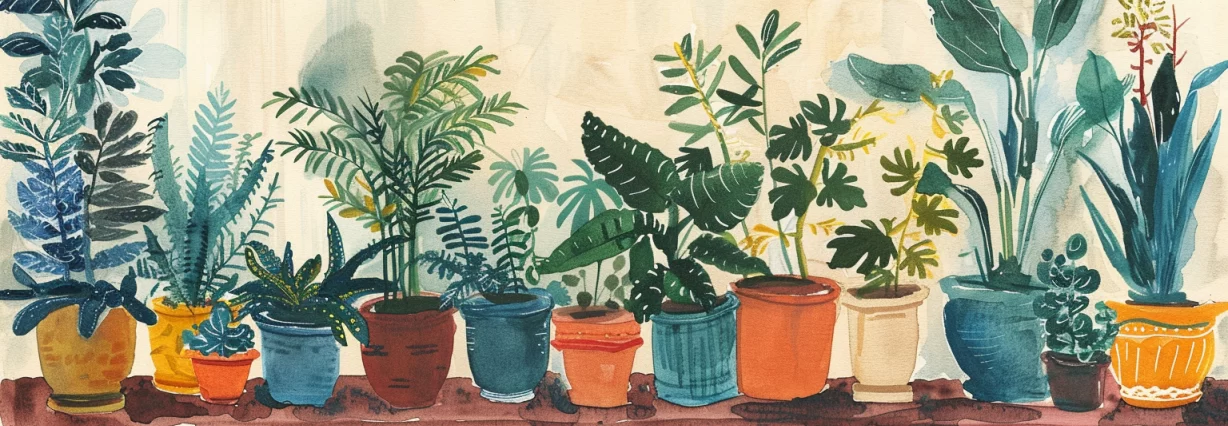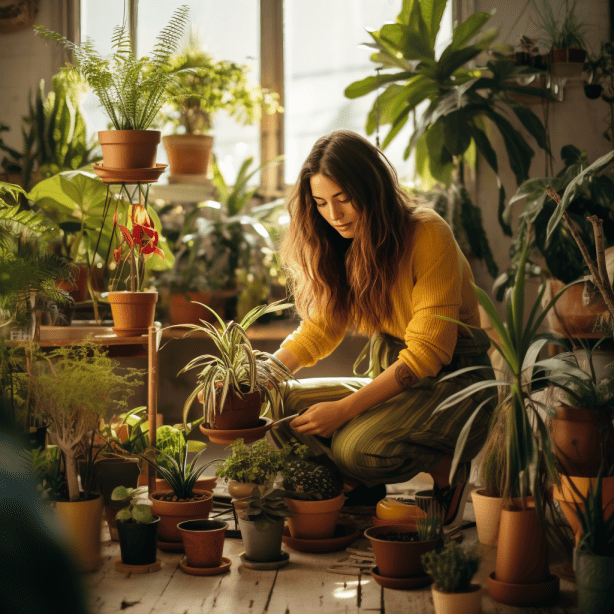Indoor plants are a great way to add life and color to your home or office space. Not only do they look great, but they also have a range of health benefits, including improving air quality and reducing stress levels. However, for beginners, selecting the right indoor plants can be daunting. With so many different types of plants available, it can be difficult to know where to start.
When selecting indoor plants, it’s important to consider a range of factors, including the amount of light and space available and the level of care required. Some plants require a lot of attention, while others are more low-maintenance. It’s also important to consider any pets or children in the home, as certain plants can be toxic if ingested.
This article will provide a comprehensive guide to selecting indoor plants for beginners. We will cover everything from the best low-maintenance plants for those new to gardening, to tips on how to care for your plants and keep them healthy. Whether you’re looking to add some greenery to your home or office or simply want to improve your indoor air quality, this guide will provide you with all the information you need to get started.
Understanding Indoor Plants
Indoor plants are a great way to bring a touch of nature into your home or workspace. Whether you’re a seasoned plant parent or just starting, there are plenty of indoor plants that are easy to care for and can thrive in a variety of environments. Here are some key things to remember when selecting indoor plants for beginners.
Light Requirements
One of the most important factors to consider when selecting indoor plants is their light requirements. Some plants require bright, direct sunlight, while others can thrive in low-light conditions. It’s important to consider the amount of natural light your space receives and select plants accordingly.



Watering Needs
Another important factor to consider is the watering needs of your indoor plants. Some plants require frequent watering, while others can go for weeks without water. It’s important to research the specific watering needs of each plant and develop a watering schedule that works for you.
Soil and Fertilizer
Indoor plants also require the right soil and fertilizer to thrive. It’s important to select soil that is well-draining and rich in nutrients and to fertilize your plants regularly to ensure they get the nutrients they need to grow.
Common Indoor Plants for Beginners
Many indoor plants are easy to care for and can thrive in a variety of environments. Some of the best indoor plants for beginners include:
- Pothos: Pothos are one of the easiest houseplants to care for and can tolerate many light conditions.
- Snake Plant: Snake plants are another easy-to-care-for option that can thrive in low-light conditions.
- Spider Plant: Spider plants are known for their air-purifying properties and can thrive in various light conditions.
- ZZ Plant: ZZ plants are a great option for low-light environments and are known for tolerating neglect.
By considering these key factors and selecting the right indoor plants, even beginners can become successful plant parents with a green thumb.
Choosing the Right Plant
Choosing the right plant is an important step in becoming a successful indoor gardener. There are many factors to consider when selecting a plant, including the level of care it requires, the amount of light it needs, and the space available in your home.
One of the easiest plants to care for is the snake plant. It is a low-maintenance plant that can survive in low-light conditions and requires minimal watering. Another low-light option is the ZZ plant, which can tolerate neglect and can go weeks without water.
For those who want a plant that requires even less maintenance, succulents are a great choice. These plants are known for their ability to store water, so they can go long periods without being watered. Some popular succulent options include echevieria and the swiss cheese plant.
Pothos is another great plant for beginners. It is a trailing plant that can grow in low to bright light and can be easily propagated by taking cuttings. Monstera, spider plant, and ferns are other options that are relatively easy to care for and can add a lot of greenery to any space.
If you’re looking for a plant that can also purify the air in your home, consider the peace lily, Chinese evergreen, or philodendron. These plants are known for their ability to filter out toxins and improve air quality.
When selecting a plant, it’s important to consider the space available in your home. If you have limited space, opt for smaller plants like the spider plant or the prayer plant. If you have more space, consider larger plants like the orchid or the dragon tree.
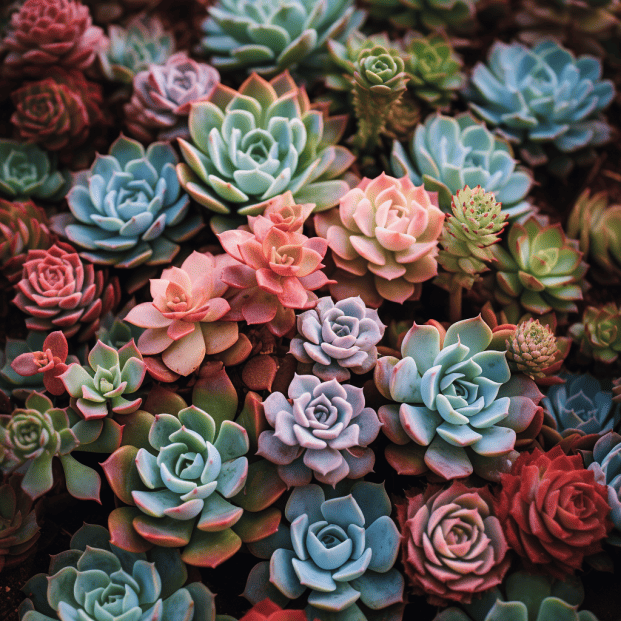



Overall, there are many great options for beginners to choose from. By considering factors like light, space, and maintenance, you can find the perfect plant to bring a little bit of nature into your home.
Plant Care Basics
Taking care of indoor plants can seem daunting at first, but with a little knowledge and practice, it can become an easy and enjoyable task. Here are some basic plant care tips for beginners:
Watering
Overwatering is one of the most common mistakes made by beginner plant owners. It is important to check the moisture level of the soil before watering. A soil probe or simply sticking your finger into the soil can help determine if the plant needs water. Most indoor plants prefer to dry out slightly between watering, so it is important not to water them too frequently.
Light
Light requirements vary from plant to plant, but most indoor plants prefer bright, indirect light. Some plants, such as succulents and cacti, prefer direct sunlight, while others, such as ferns, prefer low light conditions. It is important to research the specific light requirements of each plant to ensure it is placed in the appropriate location.
Humidity
Indoor environments can be dry, especially during the winter months when heating systems are in use. Some plants, such as tropical plants, prefer high humidity levels. Misting the leaves or placing a tray of water near the plant can help increase humidity levels.
Growth
Plants grow at different rates and require different amounts of space. It is important to research the mature size of each plant and provide enough room for it to grow. Repotting may be necessary as the plant grows.
Temperature
Most indoor plants prefer temperatures between 60-75°F (15-24°C). Avoid placing plants near drafts or heating/cooling vents.
Fertilizer
Plants require nutrients to grow, and fertilizing can help provide these nutrients. It is important to research the specific fertilizer requirements of each plant and follow the recommended dosage. Over-fertilizing can cause damage to the plant.
Hardy and Tough Plants
For beginners, it may be best to start with hardy and tough plants that are forgiving of neglect and mistakes. Some examples of easy-to-grow plants include snake plants, pothos, and ZZ plants.
Adaptability
Plants can adapt to their environment, but sudden changes can cause stress. When moving a plant to a new location, it is important to gradually acclimate it to the new light and temperature conditions.
Variegated Plants
Variegated plants have leaves with different colors or patterns. These plants require more light than their non-variegated counterparts to maintain their coloration.
Overall, taking care of indoor plants requires attention to detail and a willingness to learn. With the right knowledge and practice, anyone can become a successful plant owner.
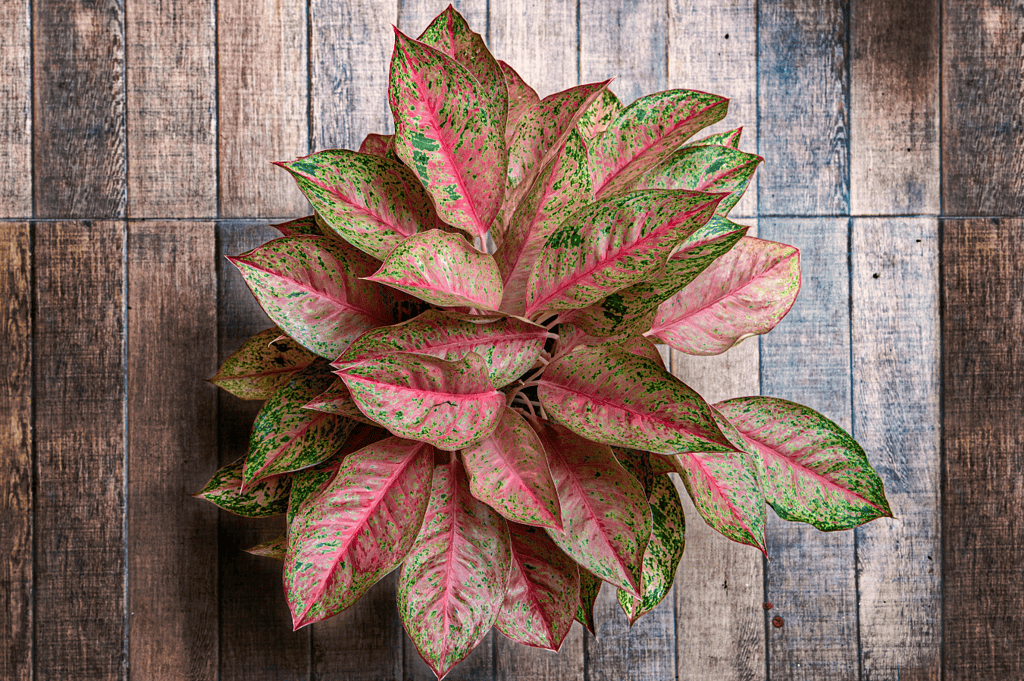

Potting and Repotting
Potting and repotting are important aspects of indoor plant care. It is essential to provide the right amount of space for the roots to grow and to ensure that the soil has enough nutrients. Here are some tips for potting and repotting indoor plants:
Potting Mix
Choosing the right potting mix is crucial for the health of your indoor plants. A good potting mix should be well-draining, lightweight, and nutrient-rich. It should also be able to hold moisture without becoming waterlogged.
Common ingredients found in potting mixes include peat moss, perlite, vermiculite, and sand. These ingredients help to create a well-draining soil that is ideal for indoor plants.
Containers and Drainage Holes
When selecting a container for your indoor plant, make sure it has a drainage hole. A drainage hole allows excess water to escape, preventing waterlogged soil and root rot.
It is also important to choose a container that is the right size for your plant. A container that is too small can restrict root growth, while a container that is too large can lead to waterlogging and root rot.
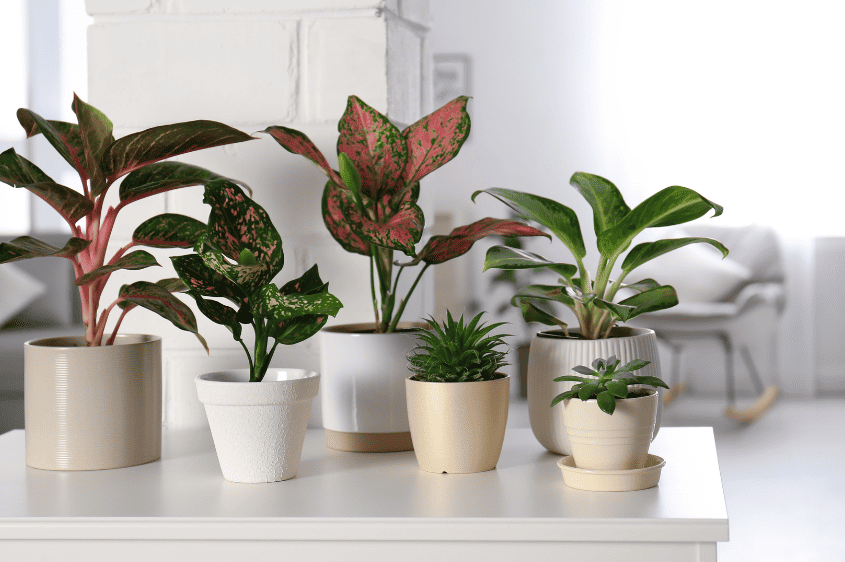
Repotting
Indoor plants should be repotted every 12-18 months to ensure that they have enough space for root growth and to replenish nutrients in the soil. Signs that a plant needs to be repotted include roots growing out of the drainage holes, stunted growth, and soil that dries out quickly.
When repotting, gently remove the plant from its old container and loosen any tangled roots. Place the plant in its new container and fill in around the edges with fresh potting mix. Water the plant thoroughly and allow excess water to drain out.
Fast-Draining Soil
Fast-draining soil is essential for indoor plants as it helps to prevent waterlogging and root rot. You can create your own fast-draining soil by mixing equal parts of potting soil, perlite, and sand.
In conclusion, potting and repotting are important aspects of indoor plant care. Choosing the right potting mix, container, and soil can help to ensure that your indoor plants thrive. Remember to repot your plants every 12-18 months and provide them with fast-draining soil to prevent waterlogging and root rot.
Propagation Techniques
Propagation is the process of creating new plants from existing ones. It’s a great way to increase your plant collection without spending money on new plants. There are several propagation techniques that beginners can try, including:
Stem Cuttings
Stem cuttings are one of the most common propagation techniques. It involves taking a cutting from a healthy plant and planting it in soil or water until it grows roots. This technique works well for plants like pothos, spider plants, and philodendrons.
To take a stem cutting, use a clean pair of scissors or pruning shears to cut a section of the stem that is at least 4 inches long. Make the cut just below a node, which is where the leaves attach to the stem. Remove any leaves from the bottom of the stem and place the cutting in water or soil.

Leaf Cuttings
Leaf cuttings are another propagation technique that works well for some plants. This technique involves taking a leaf from a healthy plant and planting it in soil or water until it grows roots. This technique works well for plants like African violets and succulents.

To take a leaf cutting, use a clean pair of scissors to cut a leaf from the plant. Make sure the leaf is healthy and has no damage. Place the leaf in soil or water and wait for it to grow roots.
Plantlets
Plantlets are small plants that grow off the parent plant. They are a natural form of propagation for some plants, like spider plants and bromeliads.
To propagate using plantlets, wait for the plant to produce them. Once they are large enough, remove them from the parent plant and plant them in their own pot.

Offsets
Offsets are similar to plantlets, but they grow at the base of the parent plant. They are a natural form of propagation for plants like aloe vera and snake plants.
To propagate using offsets, wait for them to grow large enough to separate from the parent plant. Gently remove the offset and plant it in its own pot.

Propagation is a fun and easy way to increase your plant collection. With a little patience and some basic knowledge, beginners can successfully propagate a variety of plants using stem cuttings, leaf cuttings, plantlets, and offsets.
Common Mistakes and Solutions
Indoor gardening can be a fun and rewarding hobby, but it can also be challenging for beginners. Here are some common mistakes that beginners make when selecting and caring for indoor plants, along with some solutions to help avoid these mistakes.
Overwatering
One of the most common mistakes beginners make is overwatering their plants. Overwatering can lead to root rot, which can be fatal for plants. To avoid overwatering, beginners should follow these tips:
- Water plants only when the soil is dry to the touch.
- Use pots with drainage holes to allow excess water to drain out.
- Do not leave plants sitting in standing water.
- Use a moisture meter to test the soil moisture level.
Poor Plant Selection
Another mistake beginners make is selecting plants that are not suited for indoor growing conditions. Some plants require more light, humidity, or space than others. To avoid this mistake, beginners should consider the following factors when selecting plants:
- Lighting requirements: Some plants require more light than others. Beginners should choose plants that can thrive in the available light conditions.
- Humidity requirements: Some plants require higher humidity levels. Beginners should choose plants that can tolerate the humidity levels in their home.
- Space requirements: Some plants can grow quite large. Beginners should choose plants that can fit comfortably in their home.
Root Rot
Root rot is a common problem that can occur when plants are overwatered or when the soil does not drain properly. To avoid root rot, beginners should follow these tips:
- Use a well-draining potting mix.
- Do not let plants sit in standing water.
- Water plants only when the soil is dry to the touch.
- Use pots with drainage holes to allow excess water to drain out.
By following these tips, beginners can avoid common mistakes and enjoy the benefits of indoor gardening.
Indoor Gardening Tips
Indoor gardening can be a great way to bring greenery into your home or office. However, it is important to keep in mind a few tips to ensure the success of your indoor garden.
Select the Right Plants
When selecting plants for your indoor garden, it is important to consider the conditions of your space. Think about how much light the plants will get, the temperature of the room, how big the plants will grow, and how long it will take for them to reach maturity. Some good options for indoor gardening include herbs, succulents, and small vegetables like cherry tomatoes or lettuce.
Provide Adequate Lighting
Plants need light to grow, so it is important to provide adequate lighting for your indoor garden. If your space does not receive enough natural light, consider investing in grow lights. These lights mimic natural sunlight and can help your plants thrive.
Choose the Right Soil
The right soil is important for the health of your plants. When selecting soil for your indoor garden, look for a high-quality potting mix that is specifically designed for indoor plants. This type of soil will provide the necessary nutrients and drainage for your plants to grow.
Use Plant Fertilizer
Plant fertilizer can help your indoor garden thrive. Look for a fertilizer that is specifically designed for indoor plants and follow the instructions carefully. Over-fertilizing can be harmful to your plants, so it is important to use the right amount.
Visit a Nursery
If you are new to indoor gardening, consider visiting a local nursery for advice and guidance. The experts at the nursery can help you select the right plants for your space and provide tips for care and maintenance.

Good Luck
Indoor gardening can be a fun and rewarding hobby. With the right care and attention, your indoor garden can thrive and bring a little bit of nature into your home or office.
Growing Edible Plants Indoors
Growing edible plants indoors can be a fun and rewarding experience for beginners. Not only do they add a touch of green to your home, but they also provide fresh herbs and veggies for cooking. Here are some tips for selecting and growing edible plants indoors.
Choosing the Right Plants
When selecting edible plants for indoor gardening, it’s important to consider the amount of light available in your home. Most edible plants require at least 4-6 hours of direct sunlight per day, so make sure you have a sunny spot for your plants. Leafy greens like lettuce and spinach are great options for lower light conditions, while herbs like chives, parsley, and thyme require more light.


Growing Tips
Once you’ve selected your plants, it’s important to provide them with the right growing conditions. Here are some tips for growing edible plants indoors:
- Soil: Use a high-quality potting soil that is well-draining and nutrient-rich.
- Watering: Water your plants regularly, but be careful not to overwater. Allow the soil to dry slightly between waterings.
- Fertilizer: Use a balanced fertilizer every 4-6 weeks to provide your plants with the nutrients they need.
- Pests: Keep an eye out for pests like aphids and spider mites, and treat them with an organic pesticide if necessary.
Recommended Plants
Here are some edible plants that are easy to grow indoors and provide great flavor for your cooking:
- Leafy Greens: Lettuce, spinach, kale, and arugula are all great options for indoor gardening. They are fast-growing and require minimal light.
- Herbs: Chives, parsley, thyme, and basil are all easy to grow indoors and add great flavor to your cooking.
- Microgreens: Microgreens are young seedlings of vegetables and herbs that are harvested when they are only a few inches tall. They are packed with nutrients and can be grown in small containers indoors.
Overall, growing edible plants indoors can be a fun and rewarding experience for beginners. With the right growing conditions and plant selection, you can enjoy fresh herbs and veggies all year round.
Frequently Asked Questions
What are some low-maintenance indoor plants for beginners?
For beginners who are just starting out with indoor plants, it is best to choose low-maintenance plants that are easy to care for. Some popular low-maintenance indoor plants include Snake Plant, ZZ Plant, Pothos, and Spider Plant. These plants are known for their ability to survive in a variety of light conditions and can tolerate occasional neglect.
What are the best types of indoor plants for improving air quality?
Indoor plants are known for their ability to improve air quality by removing toxins and pollutants from the air. Some of the best indoor plants for improving air quality include Peace Lily, Spider Plant, Snake Plant, and Boston Fern. These plants are known for their ability to remove common air pollutants such as formaldehyde, benzene, and carbon monoxide.
How often should indoor plants be watered?
The watering frequency for indoor plants can vary depending on the type of plant and the environment it is in. As a general rule, it is best to water indoor plants when the top inch of soil is dry to the touch. Overwatering can lead to root rot, while underwatering can cause the plant to wilt and die.
What are some common mistakes to avoid when selecting indoor plants?
When selecting indoor plants, it is important to avoid some common mistakes that can lead to plant failure. One common mistake is selecting plants that require too much light or water for the environment they are in. Another mistake is not considering the size of the plant and how it will fit in the space it is intended for. It is also important to avoid selecting plants that are known to be toxic to pets or children.
What are some tips for ensuring healthy growth of indoor plants?
To ensure healthy growth of indoor plants, it is important to provide them with the right amount of light, water, and nutrients. It is also important to ensure that the plant is in a pot with good drainage and that the soil is well-draining. Regular pruning can also help to promote healthy growth and prevent the plant from becoming too leggy.
How can you tell if an indoor plant is getting too much or too little light?
Indoor plants that are getting too much light may have scorched or yellow leaves, while plants that are not getting enough light may have pale or yellow leaves and may become leggy. It is important to pay attention to the plant’s growth and adjust the amount of light it is receiving accordingly.

